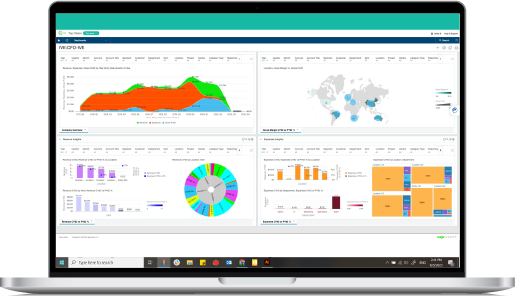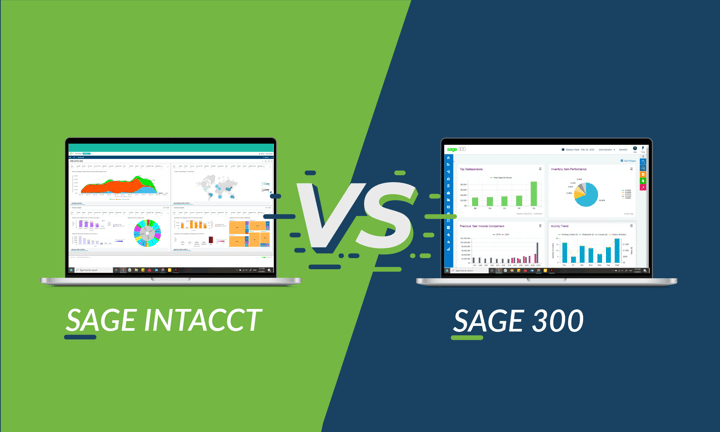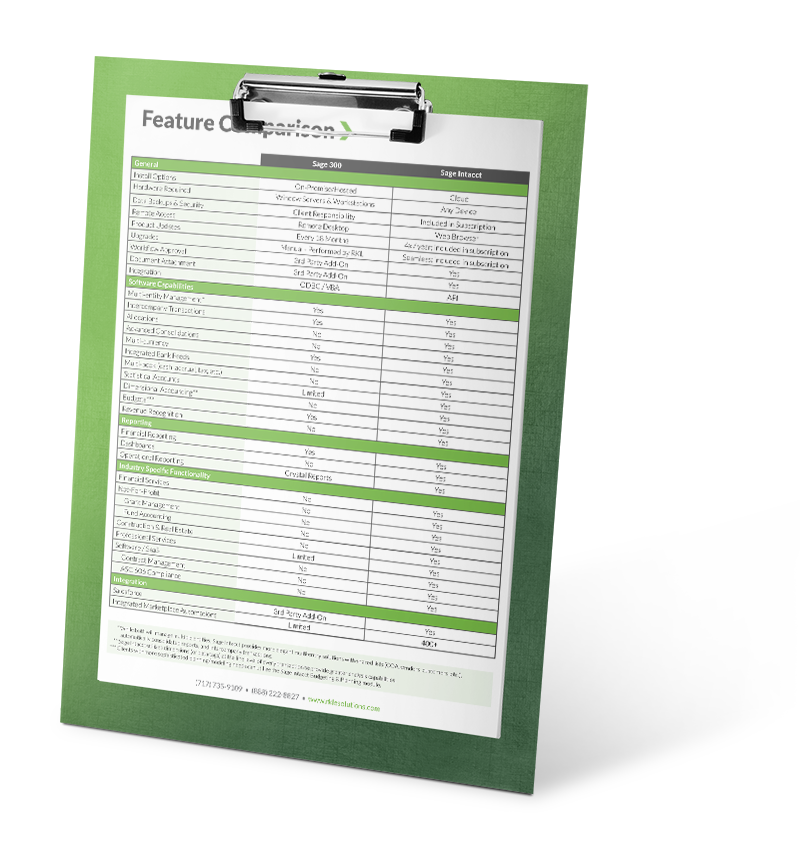Why Migrate from Sage 300 to Sage Intacct?
Changing financial management solutions and migrating from Sage 300 can be a lot of work. It takes time. It costs money. It can be a challenge to fit it in amidst many competing priorities. But upgrading your financial management software can have a transformative impact on the accounting department and the entire organization and deliver quick return on investment.
» Looking for Sage Intacct pricing? Read this blog series
Below are five of the most common reasons organizations begin considering migrating from Sage 300 to Sage Intacct.
1. Spreadsheets aren't capable of the real-time insight their growing organization requires.
Clients are frequently frustrated by the lack of flexibility and how tricky the reporting tools can be in Sage 300. Often, finance is entirely dependent upon IT or an external consultant to modify existing reports or create new ones. As a result, they spend far too much time dumping data to Excel, manipulating/pivoting/filtering/sorting information, and manually formatting required reports, charts, and graphs.
Sage Intacct has built-in dashboards and reports that can greatly reduce, and even eliminate, the need for Excel spreadsheet dependence. Dashboards and reports provide instant visibility and enable timely, data-driven decisions with data updated in real-time and configurable for each user with clicks, not complicated code.
2. Manual processes are hampering organizational effectiveness and profitability.
Sage 300 offers a solid suite of financial modules, but was not architected for certain industries (e.g. software and SaaS, professional services, media and entertainment, and not-for-profitst to name a few). Manual contract management, revenue recognition, project accounting, and fund management processes will be far less effective resulting in employee productivity problems, customer service delays, and profitability shrinkage.
Sage Intacct automates key processes including opportunity to cash, project accounting, and fund management leading to cost-effective, strategic growth.

3. Multi-entity and multi-location organizations require more dynamics from their financial management software.
Sage 300 was a "Bangin" solution when it was released in the 90's. As the demands of organizations evolved Sage 300 stayed status quo.
In contrast, Sage Intacct was architected for the cloud and offers significant flexibility and benefit for today’s organization. Consider:
- Multi-entity management – automatically consolidated financial and operational reports, intercompany transactions, allocations, shared chart of accounts (COA), customers, and vendors
- Dimensional accounting – rather than relying upon the chart of accounts and user-defined fields, Sage Intacct offers the ability to track and analyze an unlimited number of data dimensions.
- Multi-book accounting – track and report on an unlimited number of books (e.g. accrual, cash, tax, GAAP, etc.)
4. “Best-in-class” is a better approach going forward.
When Sage 300 was released in the 90s, the prevailing wisdom was that a suite of modules from a single vendor was the best way to provide required functionality across the organization and simplify integration, support, and the occasional upgrade. The problem is, no single suite of applications provides all the functionality an organization needs. Further, only part of the suite represented the ideal solution, forcing the rest of the organization to compromise with sub-optimal features.
Most organizations these days have moved or would like to migrate away from the limitations of a single vendor suite and have invested in “best-in-class” solutions – Salesforce, Budgeting and Planning Solutions, AP Automation Platforms, and many more. Sage Intacct is a perfect fit for a “best-in-class” organization. It integrates with over 200 leading cloud solutions, with APIs that are 12+ years backwards compatible, ensuring that integrations won’t break during product updates. As a result, clients can utilize the tools they want for each line of business and have confidence that they entire solution will work together seamlessly.
5. Embrace the cloud to drive strategic focus and success!
More organizations are looking for proven ways to reduce the burden on internal IT, free up resources to pursue more value-added activities, and improve their employees’ ability to spend their time serving clients, thinking strategically, and moving the company’s mission forward. Sage 300 is an on-premises application which can be hosted, but this doesn’t drive transformation in the same ways a true cloud application will.
Sage Intacct provides access from anywhere, anytime, on any device. The annual subscription includes 4 hassle-free updates per year and provides worry-free hosting, backups, and data security. It enables your accounting, finance, and IT teams to make the highest and best use of their time and be more strategic resources for the whole organization.






